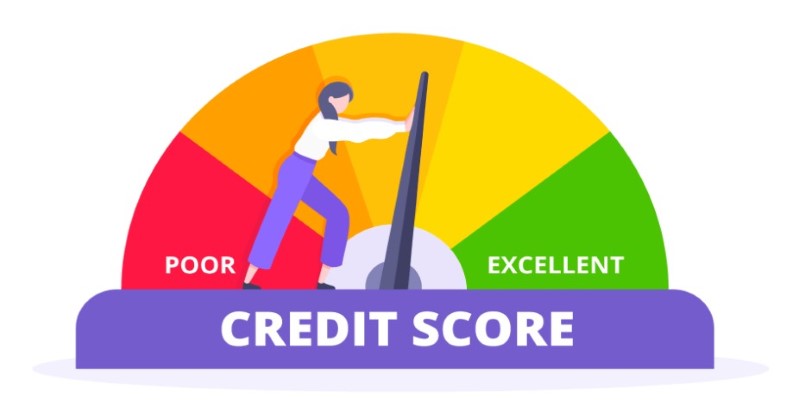Breaking Down Loan-Level Price Adjustments (LLPAs) and Their Impact on Mortgage Costs
Dec 07, 2024 By Sid Leonard
Understanding fees and adjustments like Loan-Level Price Adjustments (LLPAs) is key for borrowers navigating mortgage costs. Introduced by Fannie Mae and Freddie Mac after the 2008 financial crisis, LLPAs are risk-based fees applied to loans based on factors like credit score, down payment size, and property type.
The changes help manage the lender's risk but increase indirectly at the borrower's cost. Understanding how LLPAs work and changes introduced very recently can further enhance borrowing decisions, increasing the maximum uptake of good mortgage terms available.
What Are Loan-Level Price Adjustments (LLPAs)?
Loan-Level Price Adjustments (LLPAs) are fees added to certain conventional mortgage loans to manage risk based on borrower profiles and loan features. Introduced by Fannie Mae and Freddie Mac, LLPAs help offset the financial risk associated with borrowers who may have lower credit scores or higher loan-to-value (LTV) ratios.
It indeed depends on several factors, such as the credit score, the size of the down payment, and the purpose of the loan. In general, LLPAs are lower for those who have good credit scores and lower LTV ratios, while riskier profiles pay a higher fee or interest rate. For these reasons, adjustments must be made because they can result in large differences in total mortgage costs over time.
Factors Influencing LLPAs
LLPAs are determined by a range of factors, each reflecting a different aspect of risk. While each loan is unique, these core factors generally influence the amount of the LLPA added to a borrowers loan.
Credit Score:

A borrowers credit score is a primary factor in determining LLPAs. High credit scores indicate financial stability, typically resulting in lower or no LLPA fees. Lower credit scores, however, signal higher risk and lead to elevated LLPA charges. For instance, a borrower with a credit score below 680 often faces substantially higher LLPAs compared to those with scores of 750 or higher, reflecting the increased risk to lenders.
Loan-to-Value (LTV) Ratio:
The LTV ratio, which compares the loan amount to the propertys value, significantly impacts LLPAs. A higher LTV ratio, often around 90% or above, reflects a smaller down payment and greater lender risk, leading to higher LLPA fees. Lower LTV ratios, achieved through larger down payments, signal reduced risk and can help borrowers secure lower LLPAs, making their mortgage costs more manageable over time.
Loan Purpose:
The purpose of the mortgagewhether for a primary residence, second home, or investment propertyaffects LLPAs. Primary residences generally incur lower LLPAs due to their lower default risk. Loans for second homes or investment properties, however, carry higher LLPAs, as theyre more likely to face financial risk if economic circumstances change, reflecting the higher risk involved for lenders.
Occupancy Status:
Occupancy status, which indicates whether a property is a primary residence, vacation home, or rental, influences LLPAs. Primary residences typically have lower LLPAs, as they carry reduced risk. Conversely, non-primary residences, such as vacation or investment properties, often attract higher LLPAs due to their increased risk of default, particularly during financial downturns, impacting the mortgages cost for the borrower.
Property Type:
The type of property financed determines LLPAs because risk levels vary. Multi-unit properties, such as duplexes or condominiums, are viewed as riskier than single-family homes. Therefore, the LLPA fees for multi-unit properties are higher. Multi-unit properties require more maintenance and have a higher risk of vacancy, which lenders believe increases the risk. Single-family homes are viewed as less risky, so borrowers face lower LLPA charges.
Impact of LLPAs on Mortgage Costs
Loan-Level Price Adjustments (LLPAs) can significantly influence the overall cost of a mortgage, as they are typically added as either upfront fees or adjustments to the interest rate. When an LLPA is applied, it can increase the cost of a loan by thousands of dollars over its lifetime, especially for borrowers with higher risk factors such as lower credit scores or high loan-to-value (LTV) ratios. These additional costs translate into higher monthly payments, which can make homeownership less affordable for some borrowers.

For instance, a borrower with a low credit score and a high LTV ratio may see LLPAs added to their mortgage increase both their monthly payments and the total loan cost. On the other hand, borrowers with strong credit profiles and lower LTV ratios may face minimal or no LLPA costs, allowing them to secure lower interest rates and pay less overall. For this reason, LLPAs play a key role in determining affordability, with the adjustments impacting borrowers differently based on their financial profile and loan characteristics. Understanding LLPAs can help borrowers prepare for these potential costs, making it easier to compare loan offers and find options that align with their financial goals.
Recent Changes to LLPAs
In 2023, the Federal Housing Finance Agency (FHFA) revised the LLPA framework to address affordability and better reflect market risks. A key change was reducing LLPA fees for borrowers with lower credit scores and smaller down payments, aiming to make homeownership more accessible.
Interestingly, the FHFA also slightly increased LLPAs for borrowers with higher credit scores and larger down payments to redistribute costs more equitably. This adjustment has sparked discussions among experts and borrowers, as it reflects FHFAs effort to balance risk management with enhanced housing accessibility across diverse borrower profiles in todays mortgage landscape.
Conclusion
Loan-Level Price Adjustments (LLPAs) play a crucial role in mortgage pricing, often significantly impacting homeownership costs. Understanding LLPAs and the factors that influence them, such as credit scores, down payments, and loan types, provides borrowers with insight into potential costs. By improving credit scores, increasing down payments, and choosing strategic loan options, borrowers can reduce LLPA impact and secure better terms. Staying updated on LLPA changes is essential for navigating todays evolving mortgage market and making informed decisions about home financing.

Jan 27, 2024 Triston Martin

Feb 27, 2024 Susan Kelly

Jul 30, 2024 Triston Martin

Oct 29, 2023 Susan Kelly

Oct 29, 2023 Triston Martin

Dec 11, 2023 Susan Kelly
